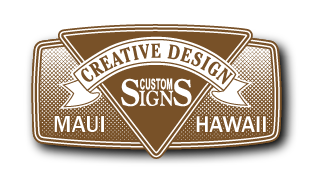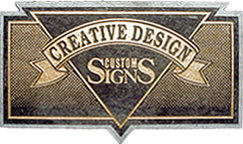Article from Signs of the Times magazine
A sense of wanderlust and adventure led Peter Capriotti from his native New Orleans across the United States. Having grown up in an artistic family, he explored numerous disciplines, including painting, window gilding and making gold jewelry. However, once he migrated to Maui, he started his own business and began to develop roots and appreciate life in the islands.During 28 years of sign shop operation, he’s undertaken quite a few unique projects representative of an island whose superlative weather and easygoing culture predispose its residents to fruitful brainstorming. And, given the ponderous cost of shipping materials to the Hawaiian Islands from the mainland, Capriotti had adapted his processes to include usual substrates and fabrication methods.Capriotti reflected on the past, present and future, and how Maui’s transformation to a tourist and cultural hotspot has grown his business opportunities – and his competition.The son of an Air Force recruiting officer, Capriotti was born in New Orleans, but his father’s assignments also to him to Jackson, Mississippi and even across the pond to Wiesbaden, Germany. Since childhood, Capriotti recalls holding a paintbrush, colored pencils and other artistic implements. Capriotti whiled away many school hours drawing ships, planes and other awe-inspiring objects that tickles his fancy.“As a kid, you’re pegged if you show artistic ability”m, Capriotti explained. “You’re always counted on to make posters and handle other types of creative assignments for the class or your friends, so you get a lot of practice.”Capriotti worked two jobs in Long Island, painted apartment murals and created pizza-box drawings to earn a scholarship to the San Francisco School of Fine Art, now known as the Art Institute, in 1964. Capriotti studied kinetic sculpture, which he said provided valuable knowledge about metals, plastics, illumination and other materials and principals essential to sign makers. While there, he began working with goldleaf at a third-generation, frame making shop. And, his practical experience – as well as a marriage and infant son – gave him a more professional outlook than many of his fellow students.Thus, Capriotti made the transition from fine to commercial art.









